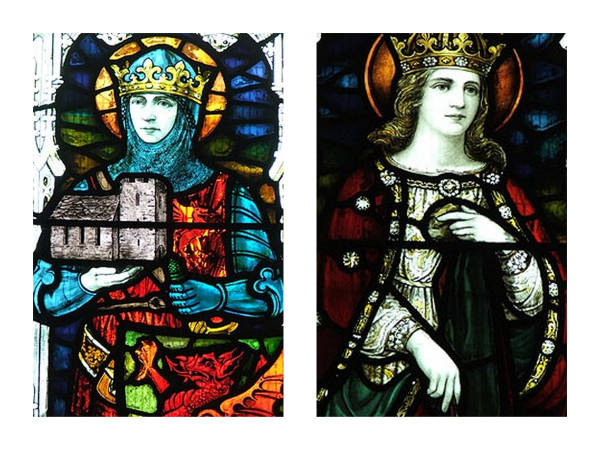According to Gwynllyw’s Vita, Gwladys was the oldest of the 24 daughters of Chieftain Brychan of Brecknock and was given in marriage to the king of Gwynllwg in south-east Wales named Gwynllyw. According to The Life of Cadoc, however, Gwynllyw had her abducted by 300 men (and was even aided in this enterprise by King Arthur, although some versions say he didn’t aid Gwynllyw but put a halt to the battle over Gwladys). (For a clearer version of how the marriage came to be, see here.)
Given Gwynllyw’s reputation as a fierce, brutal, and merciless warrior, the latter seems more likely. Supposedly he was “very partial to thieves, and used to instigate them somewhat often to robberies.”
Indeed to celebrate his eldest son Cadoc’s birth, he decided to celebrate by slaughtering a cow. Someone else’s cow. So he conducted a raid and took what he wanted. The monk St. Tatheus (aka Tathyw, Tathas) came and confronted him, telling him to give back the stolen property.
The monk’s boldness and bravery impressed the king, and so he entrusted his boy to him for his education (lacking schools, this was common back then).
In contrast to Gunlei’s Vita, The Life of Cadoc describes most of Gwladys and Gwynllyw’s marriage as far from exemplary. However it seems Cadoc persuaded them to amend their ways.
In particular, thanks to both Cadoc and Gwladys’ influence, Gwynllyw abandoned his warring violent ways. Shortly after repenting of his bellicose past, he had a dream. In it an angel showed him a white ox with a black spot on its forehead.
Sometime later, he saw the same ox and decided to leave the world by retiring to a hermitage built on that very spot.
“There is no retreat in the world such as in this space which I am destined now to inhabit. Happy therefore is the place; happier still is he who inhabits it.”
The place to which King Gwynllyw retired is now called Stow Hill (Newport, Wales) near the River Usk where there is an ancient church dedicated to St. Woolos. At first Gwladys accompanied him, but, in order to not violate the vow of chastity both had taken, she later chose a place not far away on the banks of the River Ebbw.
Although both were now living a life of penance, Cadoc forced them to separate themselves even more completely so as to completely remove temptation. As a result Gwladys headed north of present-day Newport for a “mountain of solitude” in Bassaleg, where she built a church in honor of the Virgin.
When Gwynllyw was preparing to enter eternity, he was attended by his eldest son and St. Dubricius. The later gave him Viaticum.
Both husband and wife are thought to have died between 500 and 523.
The Feast of Ss. Gwynllyw and Gwladys is March 29, the traditional date for Gwynllyw’s death, and their names are remembered in various churches and wells in South Wales. In particular there are dedicated to Gwladys a well in Tredegar Park and a church in the Diocese of Llandaff (before 1146).

